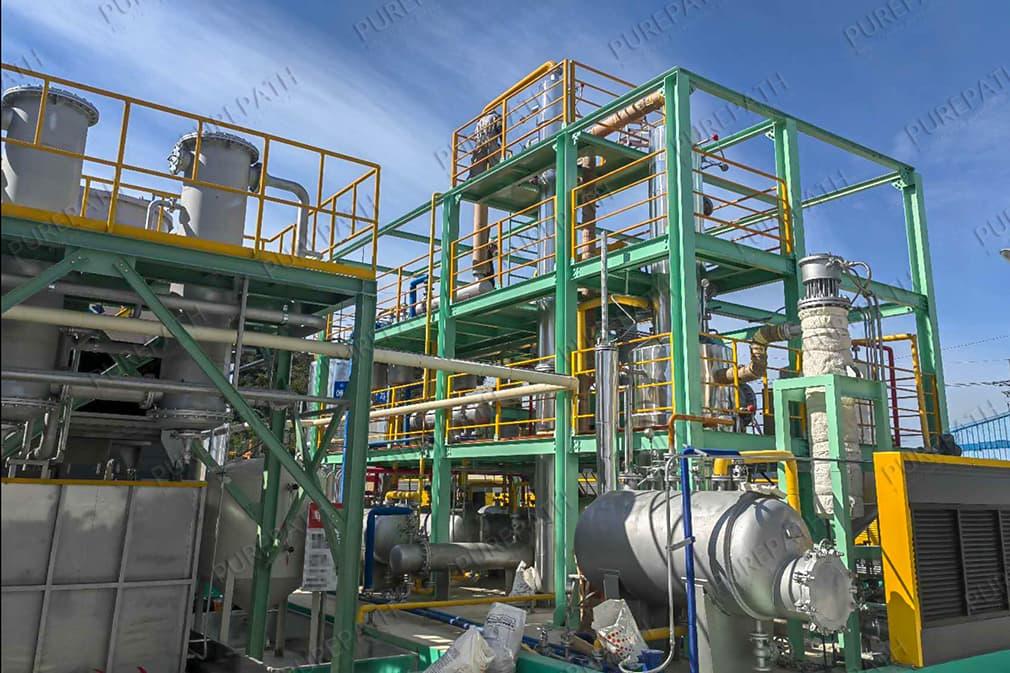Optimizing the Process: Maximizing Yield and Quality in Waste Oil Distillation

sed oil is a valuable resource, not waste! Waste oil distillation offers an eco-friendly solution by transforming it into usable products like base oil, diesel, or even lubricants. But just like any process, there's always room for improvement. In this blog, we'll delve into optimizing your waste oil distillation process to maximize both yield and quality of your output.
The Key Players: Temperature, Pressure, and Time
These three factors are the holy trinity of distillation. Finding the optimal settings will depend on the specific type of waste oil you're processing and the desired end product.
Temperature: Too high, and you risk thermal cracking, which breaks down larger hydrocarbon molecules into smaller, less valuable ones. Too low, and distillation efficiency suffers. Experiment to find the sweet spot that separates the desired fractions without breaking them down.
Pressure: Maintaining a slight vacuum in the distillation chamber can lower the boiling points of components in the waste oil, allowing for distillation at lower temperatures and potentially improving the quality of your product.
Time: Patience is key! Rushing the process can lead to incomplete separation of various oil fractions, impacting both yield and quality.
Pre-processing Matters
Don't underestimate the importance of properly pre-processing your waste oil. Here's why:
Filtration: Removing contaminants like dirt, water, and metals prevents them from interfering with the distillation process and potentially harming your equipment.
Dehydration: Water in the waste oil can lead to foaming and corrosion during distillation. Dehydrating the oil beforehand ensures a smoother process and protects your equipment.
Choosing the Right Distillation System
The type of distillation system you use can significantly impact your results. Here are two common options:
Batch Distillation: A simpler and more affordable option, batch distillation is ideal for smaller operations. However, it can be less efficient in terms of yield compared to continuous distillation.
Continuous Distillation: Continuously feeding waste oil into the system allows for ongoing production. This method often boasts higher yields but requires a larger upfront investment.
Beyond the Basics: Advanced Techniques
For those seeking an extra edge, consider these advanced techniques:
Fractional Distillation: This method involves separating the waste oil into even finer fractions, allowing for the production of more specific products.
Vacuum Distillation: By creating a deeper vacuum in the chamber, you can achieve even lower distillation temperatures, potentially improving the quality of certain products.
Safety First!
Waste oil distillation involves flammable materials and high temperatures. Always prioritize safety by following these guidelines:
Proper ventilation: Ensure adequate ventilation to remove hazardous fumes.
Personal Protective Equipment (PPE): Wear appropriate PPE like gloves, goggles, and respirators.
Regular maintenance: Maintain your distillation system regularly to prevent malfunctions and safety hazards.
By implementing these optimization strategies, you can significantly improve the yield and quality of your waste oil distillation process. Remember, the key lies in experimentation, choosing the right equipment for your needs, and prioritizing safety throughout the process. With dedication and these insights, you can turn waste oil into a valuable and eco-friendly resource!
- Sanat
- Doğa
- El sanatları
- Dans
- İçecekler
- Film
- Kondisyon
- Gıda
- Oyunlar
- Bahçıvanlık
- Sağlık
- Ev
- Edebiyat
- Müzik
- Networking
- Diğer
- Parti
- Din
- Alışveriş
- Spor Dalları
- Tiyatro
- Yaşam
